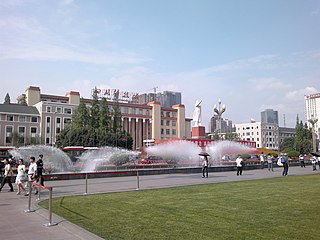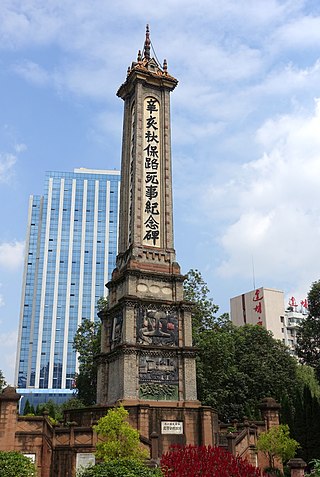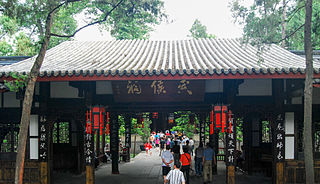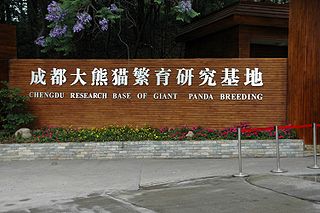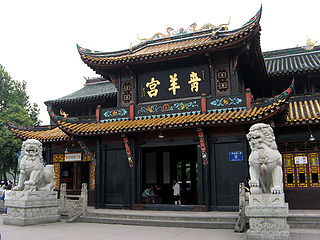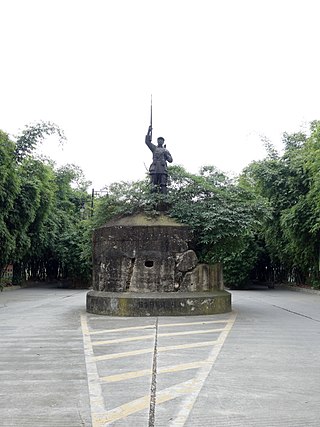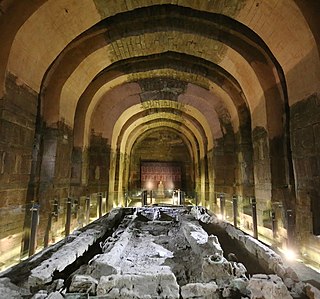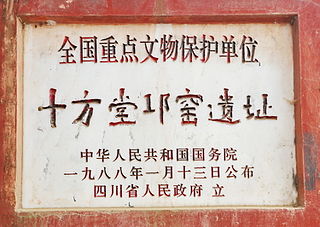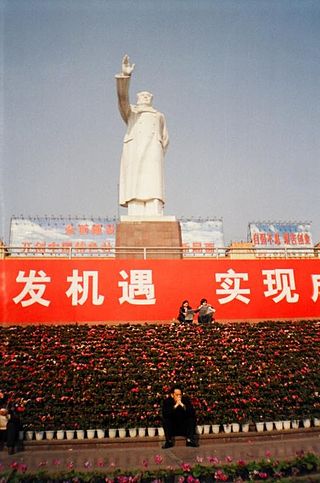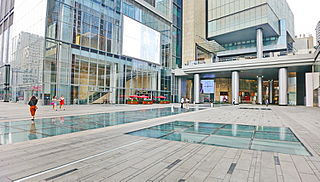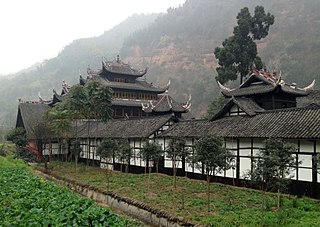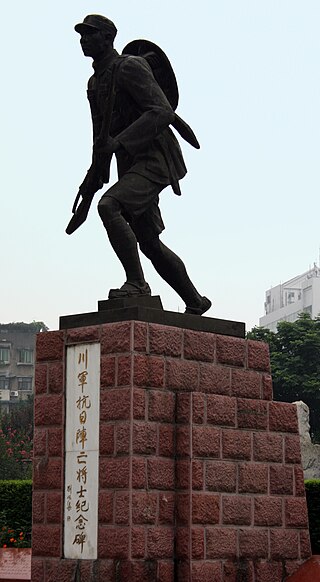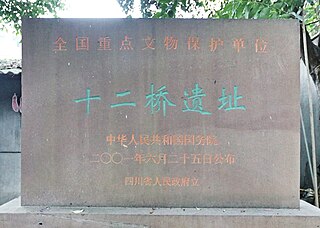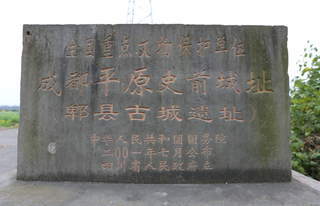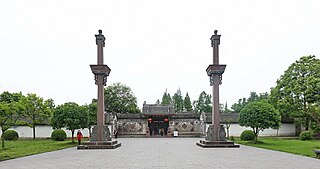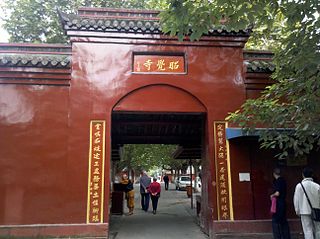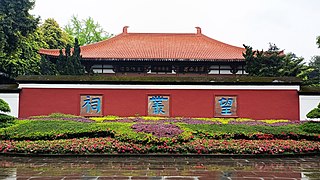22 Sights in Chengdu, China (with Map and Images)
Legend
Premium Sights
Book tickets, guided tours and activities in Chengdu.
Guided Free Walking Tours
Book free guided walking tours in Chengdu.
Welcome to your journey through the most beautiful sights in Chengdu, China! Whether you want to discover the city's historical treasures or experience its modern highlights, you'll find everything your heart desires here. Be inspired by our selection and plan your unforgettable adventure in Chengdu. Dive into the diversity of this fascinating city and discover everything it has to offer.
Sightseeing Tours in ChengduActivities in Chengdu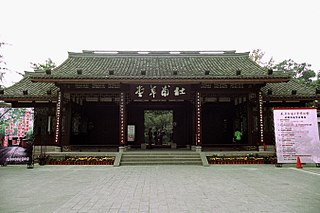
Du Fu Thatched Cottage is a 24-acre (97,000 m2) park and museum in honour of the Tang dynasty poet Du Fu at the western outskirts of Chengdu, adjacent to the Huanhua Xi. In 1961 the Chinese government made the cottage a National Heritage site.
Tianfu Square is a square in Chengdu, Sichuan Province, People's Republic of China, located in the center of the city, with Shudu Avenue (east-west arterial road) to the north, Renmin Middle Road (north-south arterial road) to the east, Dongyu Street and Xiyu Street (east-west arterial road) to the south, with an area of 88,368 square meters. Tianfu Square Station, the interchange station of Chengdu Metro Line 1 and Line 2, is located here. Historically, this place was the imperial city of Chengdu.
People's Park is an urban public park in central Chengdu, capital of Sichuan province, China. Built in 1911 as Shaocheng Park (少城公园), it is the first public park in the city. The Railway Protection Movement Monument in the park is designated a Major Historical and Cultural Site of China.
4. Wuhou Temple
Chengdu Wuhou Temple, located in Chengdu City, Sichuan Province, South Gate Wuhou Temple Street, is China's only monarch and minister ancestral temple, composed of Wuhou Temple, Han Zhaolie Temple and Huiling, people are accustomed to call the three collectively called Wuhou Temple. Chengdu Wuhou Temple was built in 223 A.D. when the Huiling (Liu Bei's mausoleum) was built, in which the Wuhou Temple (Zhuge Liang's special temple) was built before the Tang Dynasty, at the beginning of the Han Zhaolie Temple adjacent to the worship of Liu Bei (Emperor Zhaolie of the Han Dynasty), the Wuhou Temple was incorporated when it was rebuilt in the early years of the Ming Dynasty, forming a pattern of the unity of the monarch and the minister, the ancestral hall and the cemetery. In addition to Huiling, the main building of the existing ancestral temple was rebuilt in 1672 during the Kangxi reign of the Qing Dynasty. In 1984, Chengdu Wuhou Temple Museum was established, and in 2008, it was rated as the first batch of national first-class museums.
5. Chengdu Research Base of Giant Panda Breeding
The Chengdu Research Base of Giant Panda Breeding is a government-funded non-profit breeding and research institute for giant pandas, red pandas, and other rare animals, located in Chengdu, Sichuan, China.
Wikipedia: Chengdu Research Base of Giant Panda Breeding (EN), Website
6. Qingyang Taoist Temple
Qingyang Palace is a Taoist temple in China, located in No. 9, West Section 2, First Ring Road, Qingyang District, Chengdu City, Sichuan Province, adjacent to the Jinjiang River, known as "the first Taoist temple in western Sichuan" and "the first jungle in the southwest", it is a famous cultural relics tourist attraction and tourist attraction in the country, and the largest Taoist temple in southwest China. The cultural relics are: Doumu Palace, Bagua Pavilion, Bronze Green Sheep, Wu Daozi Painting Ben Lu Zu Stone Carving, Zhang Sanfeng Statue and the Palace Collection of "Taoist Collection" scripture edition. The Qingyang District of Chengdu City got its name from this. On December 27, 2002, it was announced as a cultural relics protection unit in Sichuan Province.
7. West Pearl Tower
West Pearl Tower is a 339-metre-high (1,112 ft) tower built of reinforced concrete located in Chengdu, Sichuan Province, China. West Pearl Tower started construction in 1992 but construction was halted later in the year due to budgeting problems. Construction restarted in 1998 and was completed in 2004. It was mainly built to help TV networks across Chengdu but since then it has expanded to include a revolving restaurant with a 360 degree view of the city, and a recreational and commercial mall for Chengdu.
8. Jianchuan Museum Cluster
The Jianchuan Museum Cluster is located in Anren Town, Dayi County, Sichuan province, China, about one hour's drive from the provincial capital Chengdu. It consists of 26 museums which showcase China's largest private collection of artifacts amassed during the last 60–70 years.
9. yongling
The Yongling Mausoleum, commonly known as the tomb of Wang Jian, is the burial place of Wang Jian (847–918), the founding emperor of Former Shu. It is located at 10 Yongling Road, Jinniu District, Chengdu, Sichuan, China.
10. 辛亥秋保路死事纪念碑
Located in the northwest of People's Park in Chengdu, Sichuan Province, China, the Xinhai Qiubao Road Death Monument is a masonry obelisk structure. The monument was built in 1913 and was built by the Sichuan-Han Railway Corporation to commemorate the martyrs who died in the Sichuan Road Protection Movement in 1911. The stele is 31.86 meters high, is composed of four parts of the stele platform, the stele base, the stele body, the stele top, and the stele body is written on the four sides of the stele body with the words "Xinhai Qiubao Road Death Monument" in different fonts. After its completion, the monument has undergone many repairs, and in 1988 it was listed as a national key cultural relics protection unit.
11. 什邡堂邛窑遗址
The ruins of Shifangtang Qiongyao are the ruins of folk porcelain kilns from the Sui to the Song Dynasty, which are distributed in Linqiong Town and Guyi Town, Qionglai City, Sichuan Province. On November 16, 1987, it was announced as the second batch of cultural relics protection units in Sichuan Province. On January 13, 1988, it was listed as the third batch of national key cultural relics protection units; In 2006, the kiln site of Dayu Village and the kiln site of Wayaoshan were announced as the sixth batch of national key cultural relics protection units, and merged into the third batch of Shifang Tang Qiongyao kiln sites.
12. Chairman Mao statue
The Mao Zedong Statue is a marble sculpture located in Tianfu Square, Chengdu, Sichuan, China. The monument stands 30 m (98.4 ft) tall and depicts Mao Zedong with an outstretched arm. Before 1967, the site was occupied by an ancient palace from the Shu Kingdom of ancient Sichuan. The palace was destroyed by Red Guards and the moat around it filled in to make an air raid shelter in 1967.
13. Liu Xiang Cemetery
Liu Xiang Mausoleum is located in Wuhou District, Chengdu City, Sichuan Province, east of Chengdu Wuhou Temple, for the Sichuan Army general Liu Xiang's cemetery. It was built in 1941, covering an area of 130 acres, and was designed by the architect Yang Tingbao. In 1953, it was merged with Wuhou Temple for the southern suburbs park, in 1974, the Wuhou Temple was separated from the southern suburbs park, and since 2003, the southern suburbs park has been managed by the Wuhou Temple Museum, and Liu Xiang Cemetery is also known as the west area of the Wuhou Temple Museum.
14. 江南馆街街坊遗址
The ruins of Jiangnanguan Street are located in the original Jiangnanguan Street, Jinjiang District, Chengdu City, Sichuan Province, and the ruins are mainly composed of streets, housing sites and drainage facilities in the Tang and Song dynasties, with 4 wrong brick roads, 4 dirt branch roads, 22 house sites, and 16 large and small drainage canals. The ruins in the ruins are well preserved, it is a major archaeological discovery to fill the gap in the urban archaeology of Chengdu, all kinds of ruins in the ruins are very rich, the main and secondary streets, houses, drainage channels (urban sewers) are planned scientifically, and the layout is reasonable. It is the most well-preserved one among the dozens of ruins found in the Tang and Song dynasties in Sichuan, which provides important material materials for the study of the architectural form, style and construction technology of the Tang and Song dynasties. Exploration and excavation was carried out in October 2007. In 2008, it was selected as one of the top ten new archaeological discoveries in the country, and on July 16, 2012, it was announced as the eighth batch of cultural relics protection units in Sichuan Province. On March 5, 2013, it was listed as the seventh batch of national key cultural relics protection units.
15. Chuanwang Palace
Xinchang Sichuan Palace is located in Xinchang Town, Dayi County, Chengdu City, Sichuan Province, China, on the bank of the Tiger Leaping River, was built in the Ming Dynasty, the existing buildings are rebuilt in 1926, is a memorial to the "Sichuan King" Li Bing of the Sichuan Lord Faith Temple Building. The Xinchang Sichuan Palace adopts the construction technique of piercing bucket architecture with Bashu characteristics, and is a precious example of modern wooden temple architecture in western Sichuan.
16. 川军抗日阵亡将士纪念碑
The Sichuan Army Anti-Japanese Memorial Monument, located outside the East Gate of the People's Park in Qingyang District, Chengdu City, Sichuan Province, China, is the work of the famous Chinese sculptor Liu Kaiqu, which means to commemorate the great contribution made by the Sichuan Army to the War of Resistance against Japan, the monument was originally officially completed on July 7, 1944, erected in the Chengmen Cave of Chengdu East Gate, that is, the starting point of the Sichuan Army's anti-Japanese journey out of Sichuan.
17. 十二桥遗址
The site of the Twelve Bridges, located on the south side of the Twelve Bridges Road, Qingyang District, Chengdu, Sichuan Province, in the courtyard of the Chengdu Institute of Cultural Relics and Archaeology (formerly the Chengdu Museum), was excavated in 1985-1989 and is an important architectural remains of the Shang and Zhou dynasties. On January 16, 1987, it was announced as the second batch of cultural relics protection units in Sichuan Province. On June 25, 2001, it was listed as the fifth batch of national key cultural relics protection units.
18. 郫县古城遗址
The ruins of the ancient city of Pixian County, one of the prehistoric city sites of the Chengdu Plain, are located in the ancient town of Gucheng Village, Pidu District, Chengdu City, Sichuan Province, People's Republic of China, about 4000 years ago, and belong to one of the Baodun cultural city sites in the Neolithic Age Chengdu Plain. In 2001, the State Council officially announced that it was the fifth batch of national key cultural relics protection units.
19. 寿安陈家大院
Shou'an Chenjia Compound, commonly known as Chenjia Mast, is located in Shou'an Town, Wenjiang District, Chengdu City, Sichuan Province, and is a comprehensive courtyard-style ancient building complex with a typical style of western Sichuan folk houses, integrating residences, ancestral halls and gardens. On December 27, 2002, it was announced as the sixth batch of provincial-level cultural relics protection units in Sichuan Province. On March 5, 2013, it was listed as the seventh batch of national key cultural relics protection units.
20. Zhaojue Temple
Zhaojue Temple is a Buddhist temple located in Chenghua District of Chengdu, Sichuan, China. Zhaojue Temple has been burned down and rebuilt several times, due to natural disasters and wars; the modern temple was completed in 1984.
21. Wangcong Temple
Wanghong Ancestral Hall is located in Pidu District, Chengdu City, Sichuan Province, Pi Tube Street, is a memorial to the ancient Shu Emperor Du Yu and Cong Emperor turtle spirit of the ancestral hall, but also the only ancestral shrine in southwest China to worship two lords of the emperor's mausoleum, the existing buildings are mainly built in the Qing Dynasty. On April 16, 1991, it was announced as the third batch of cultural relics protection units in Sichuan Province. Wangcong Temple is a national AAAA-level tourist attraction.
22. Jinsha Culture Relict Site
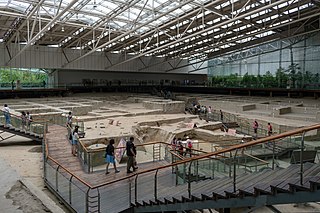
Jinsha is a Chinese archaeological site located in Qingyang, Chengdu, the capital of the Chinese province of Sichuan. The site is one of the major archaeological discoveries in China during the 21st century. It is listed on the UNESCO World Cultural Heritage Tentative List and Major Sites Protected at the National Level. The Chinese Internet Information Centre ranked Jinsha 5th on the Top 10 Archaeological Discoveries in 2001.
Share
Disclaimer Please be aware of your surroundings and do not enter private property. We are not liable for any damages that occur during the tours.
